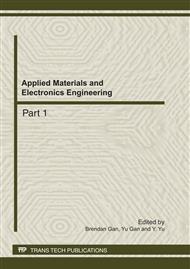p.727
p.731
p.735
p.740
p.744
p.748
p.752
p.759
p.763
Effect of Solid Solution Treatment on the Microstructure and Mechanical Properties of IN738LC Superalloy
Abstract:
Cast IN738LC alloy mainly consists of primary gamma matrix, gamma prime precipitates, and carbides. SEM-EDS analysis results suggested that most of the carbides are MC type ones that possess high Ti or Ta contents. MC carbides were partly dissolved into the matrix during the solid solution treatment, and the morphology and size of carbides were influenced by the solid solution treatment temperature. Characteristics of gamma prime precipitates were also significantly affected by the solid solution treatment conditions. Single or duplex size distributions of gamma prime precipitates were obtained depending on the solid solution treatment condition. Higher tensile strength was obtained in the case of finer precipitation size and in the case of single size distribution as compared with that of duplex size distribution.
Info:
Periodical:
Pages:
744-747
Citation:
Online since:
October 2011
Authors:
Keywords:
Price:
Сopyright:
© 2012 Trans Tech Publications Ltd. All Rights Reserved
Share:
Citation:


